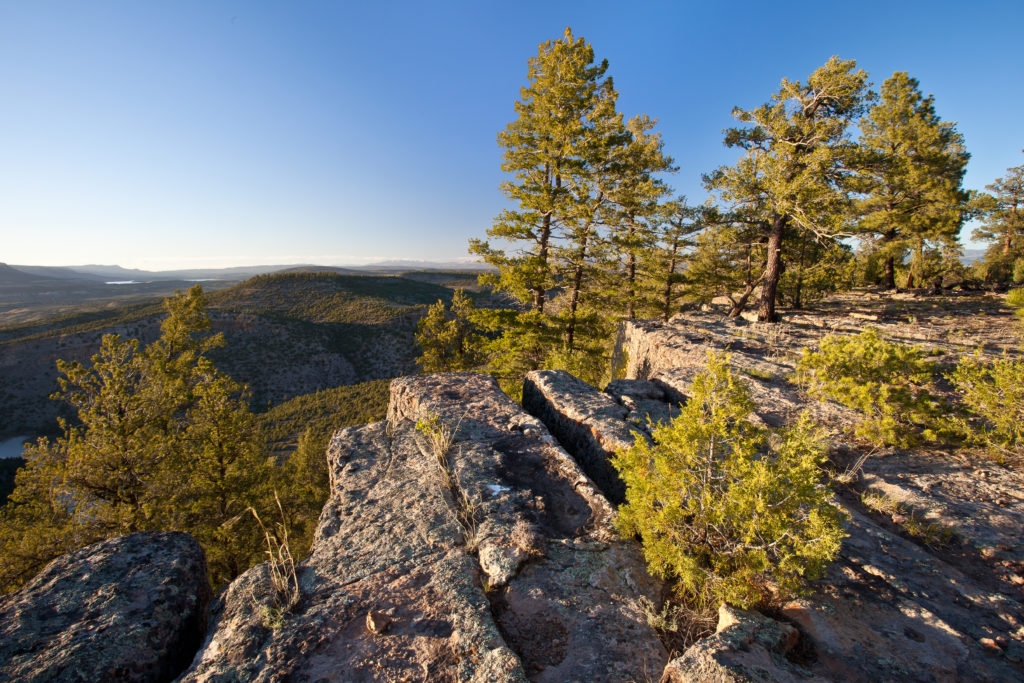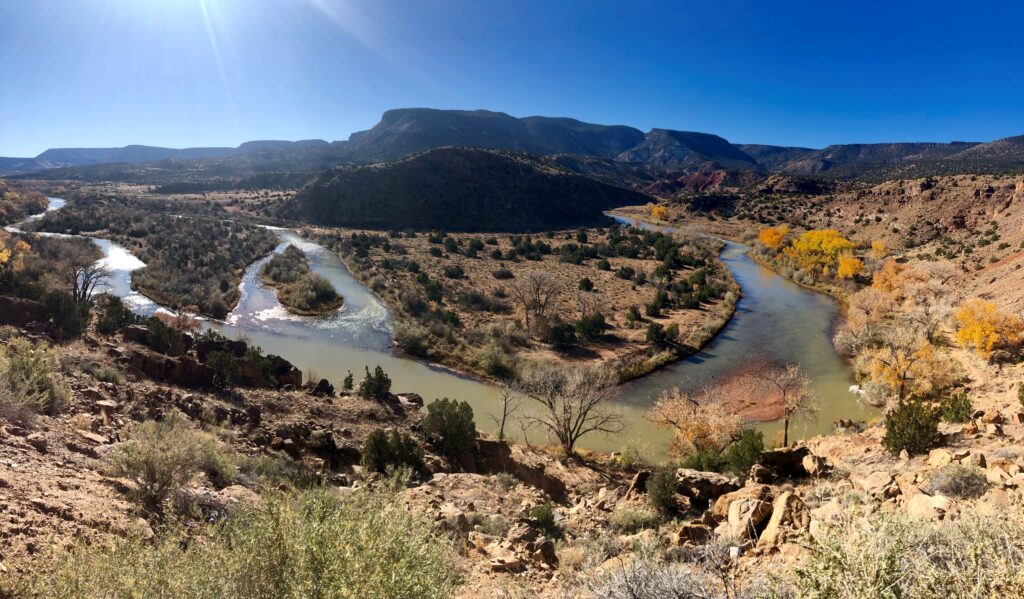Accomplishments
The 2-3-2 cohesive strategy partnership launched in early 2016 out of a collective public and governmental interest to address forest health concerns and protect headwaters and water resources in Colorado and New Mexico through cross-boundary forest and fire management, collaboration, and planning. More than 5.1 million acres make up the 2-3-2 footprint – approximately the size of Delaware and Connecticut combined. Below are some of the successes achieved by the partnership as of 2022. Stay tuned for more updates.
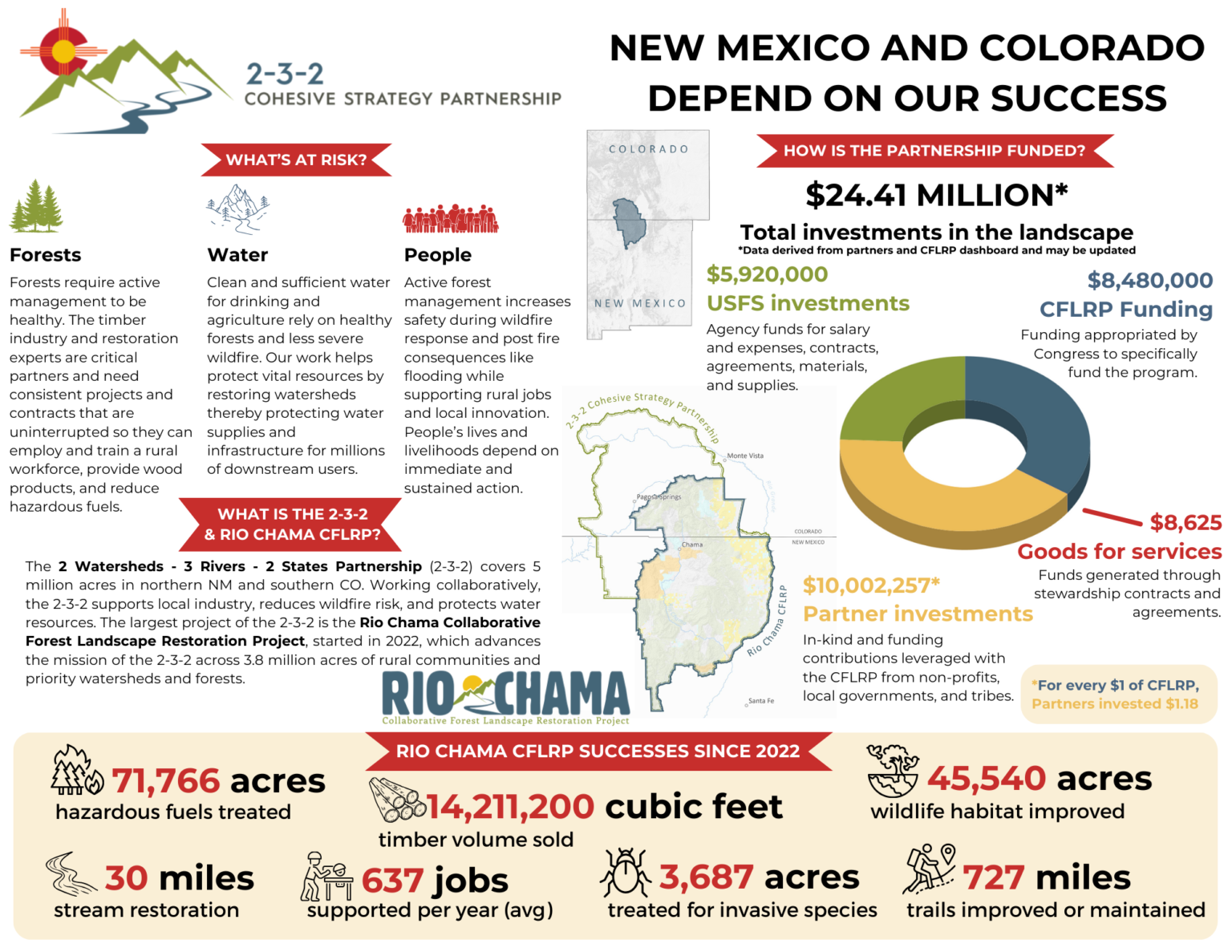
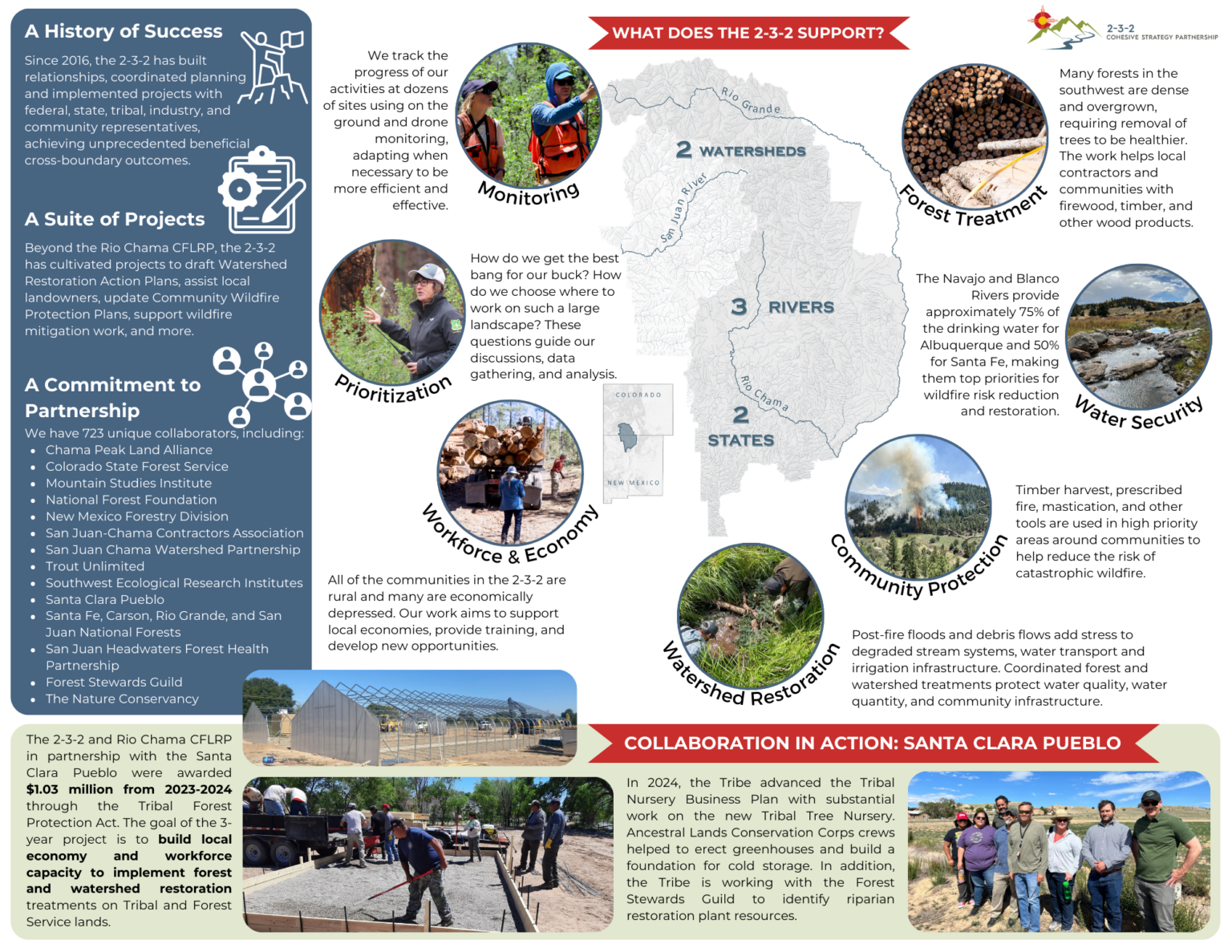
- Executed a 10-year Master Agreement with the Forest Stewards Guild for watershed restoration
- Finalized and implemented the 2-3-2 Partnership Multiparty Monitoring Plan, including year 1 of field monitoring for ecological and socioeconomic indicators.
- Executed a Tribal Forest Protection Act Workforce Development Agreement with Santa Clara Pueblo for watershed and forest restoration treatments.
- Permanently staffed two remaining Rio Chama CFLRP United States Forest Service positions (GIS specialist and Public Affairs Officer).
- Finalized and implemented joint communications strategies for the 2-3-2 and Rio Chama CFLRP.
- Completed prescribed burns on the Carson National Forest (Dorado/Cañada del Agua) and Santa Fe National Forest (Golondrino), totaling 4,381 acres, and implemented 2,018 acres of managed Comanche Fire.
- Completed 15,514 acres of fuels treatments, 15,951 acres of watershed improvement, and 47,921 ccf (hundreds of cubic feet) timber volume sold on National Forest land.
- Facilitated cross-boundary CFLRP treatment planning.
- Hosted three 2-3-2 Partnership tour meetings with combined total of 170 attendees, including Tribal, federal, state, non-profit, legislative representatives, and research partners.
Since 2016, Members of the 2-3-2 Partnership Have Worked Collaboratively to:
Apply for and successfully secure $30 million through the Collaborative Forest Landscape Restoration Program
The Collaborative Forest Landscape Restoration Program (CFLRP), enabled by Congress, is designed to increase the resiliency of forests and watersheds in priority forests across the U.S.
The Rio Chama CFLRP is the largest project of the 2-3-2 Cohesive Strategy Partnership, which serves as the local collaborative group working with the Forest Service. The Program provides $30 million in funding over ten years.
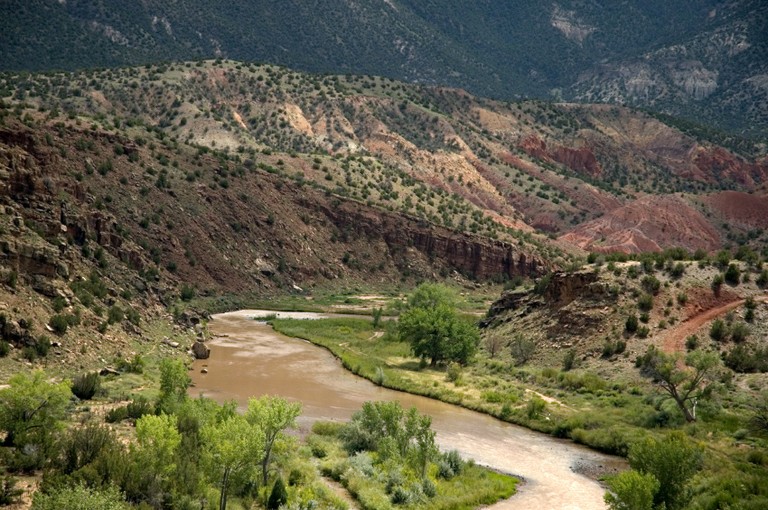
Challenge the Notion of Boundaries: Social, Political Ownership
Share Resources: Secured over $5 Million to date (as of 2018)
By establishing trust and critical communication between partners, the 2-3-2 has leveraged funding opportunities, matched needs, and built programs to utilize at-risk funds. To date, partners in the 2-3-2:
-
Secured the use of $1.5 million for the development of a FireWise Program and forest thinning treatments to help protect homes in Rio Arriba County
-
Leveraged existing finances to secure $3.25 million in Regional Conservation Partnership Program funds from NRCS to implement on-the-ground conservation practices on private lands, with an emphasis on forest and watershed health. Like the 2-3-2, these funds are contingent upon diverse participation and the implementation of innovation solutions.
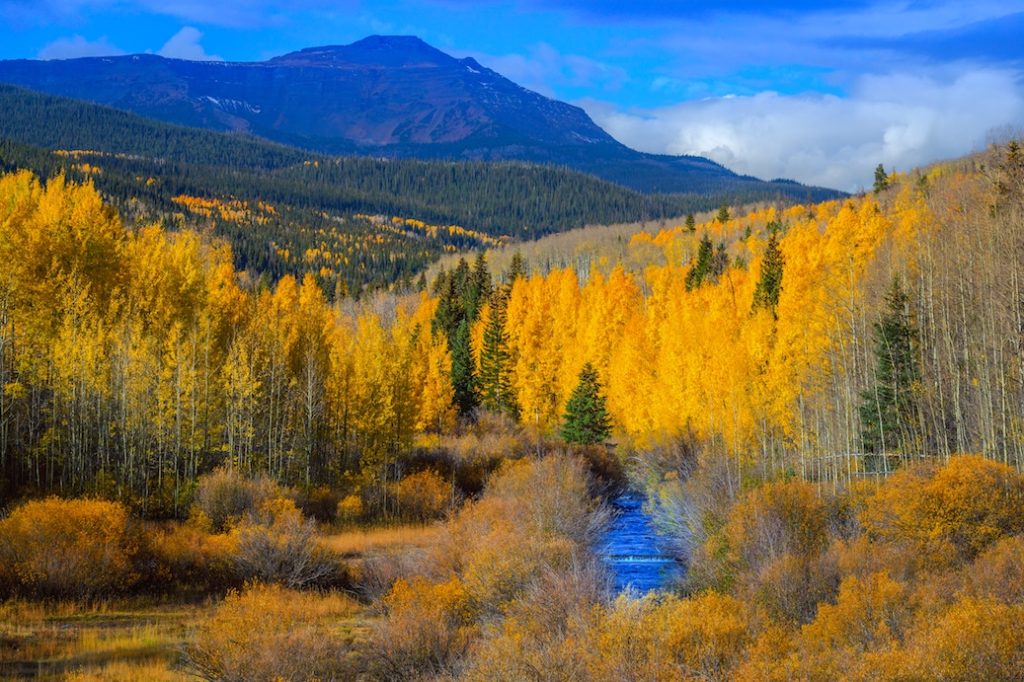
- Raised $1 million from Albuquerque, New Mexico’s water utility for forest restoration efforts in Colorado’s Blanco and Navajo watersheds, where most of Albuquerque’s water supply originates
- Secured $750K for work supporting the goals of resilient landscapes, fire adapted communities and a safe and effective wildfire response under the National Cohesive Wildland Fire Management Strategy
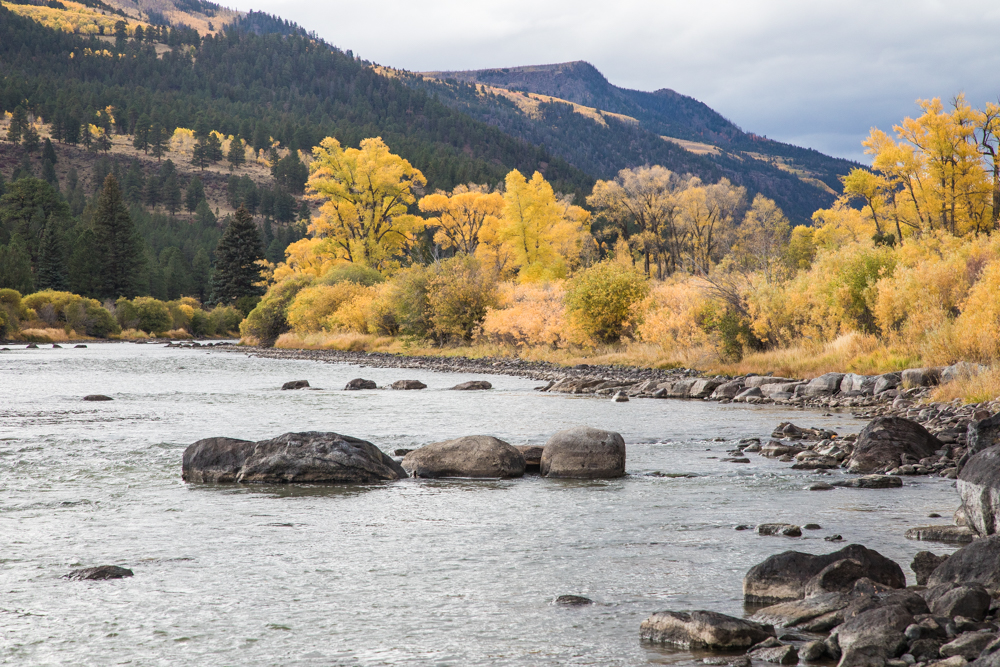
Work on the Ground: Early Achievements
Partners in the 2-3-2 share critical, on-the-ground resources for forest management and fire. To date, partners in the 2-3-2 have:
- Jointly treated over 10,000 acres through prescribed fire
- Promoted expanded use of prescribed fire on the landscape leading to additional prescribed burns and public acceptance
- Created and maintained critical networks for timber suppliers, wood processors, and their materials and markets. Partners support creative solutions to wood utilization and the promotion of local wood products
Promote Coordinated Approaches to Forest Management
Diverse representation within the partnership promotes dialogue about shared impacts and opportunities on topics such as wildlife habitat and connectivity and the health of streams and aquatic species. These conversations include collective thinking about resources across boundaries on the landscape. Through shared management experiences, partners are better informed and able to consider and incorporate multiple values into treatments; work together to manage for forests that are resilient for the optimum number of values; identify appropriate treatment efforts to achieve agreed upon goals; and strategically apply these efforts across the landscape regardless of ownership. These relationships have already resulted in cooperative prescribed burns of more than 5,000 acres by representatives of three forests, BLM, Colorado Department of Fire Prevention and Control, Colorado Parks and Wildlife, local entities, multiple NGOs, and others.
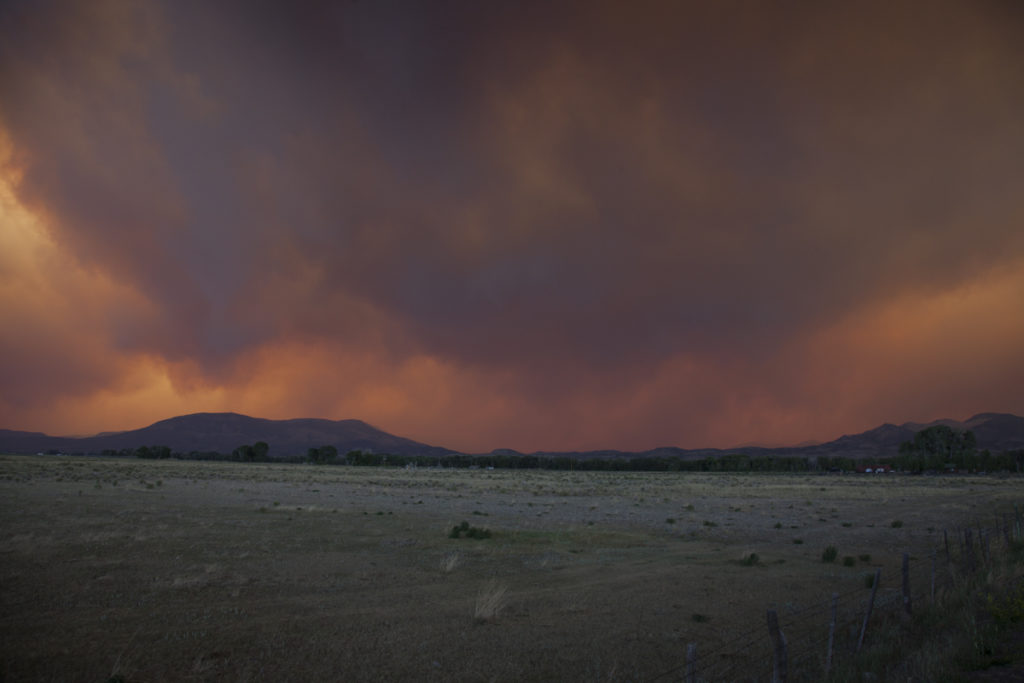
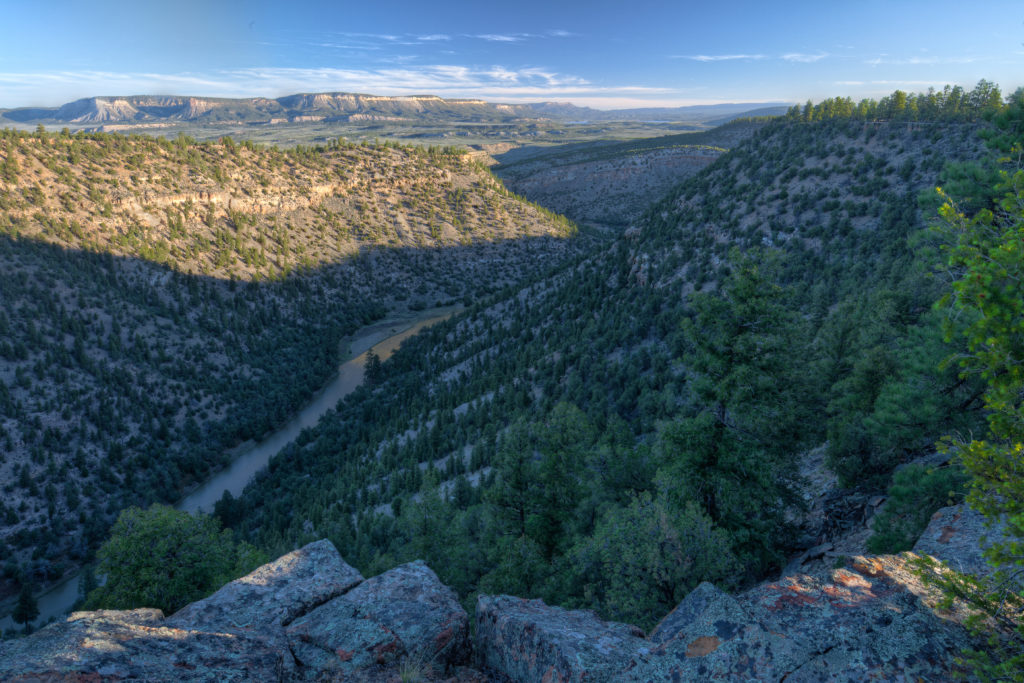
Elevate Local Efforts
Establish Critical Connections & Trust
Through quarterly in-person meetings (hosted at locations throughout the 2-3-2 geography), bi-monthly web meetings, and regular communication, the 2-3-2 has established a critical cross-boundary dialogue about resource management and developed networks for sharing resources, lessons learned, and tools for coordinating land management activities. Just one of many examples is set forth below.
“When Jeremy Marshall [District Ranger, Carson National Forest] told me that the Blanca Mill is putting on a second shift and maybe taking more outside wood, that made me think that it could serve as a close mill for our purchasers to be able to take the wood harvested off of the forest. This could reduce their costs and allow for them to bid on more of our sales as they might be able to increase their capacity having a mill so close by (as opposed to Montrose for example). I think that communication of important information such as this is one of the greatest values of the 2-3-2. Just by communicating, we are helping everyone find ways to work more effectively and efficiently, and in a way that makes sense for the landscape.”
